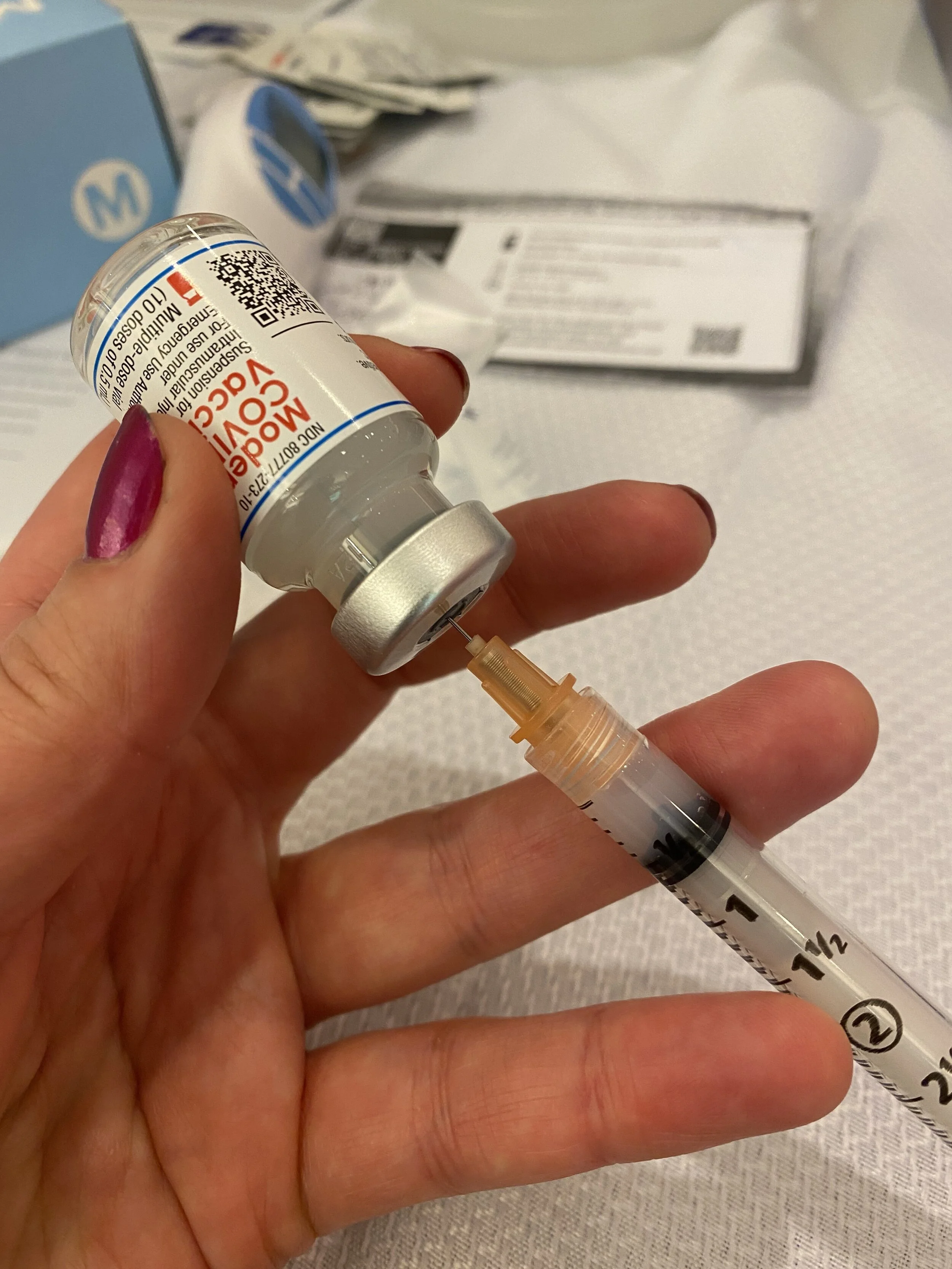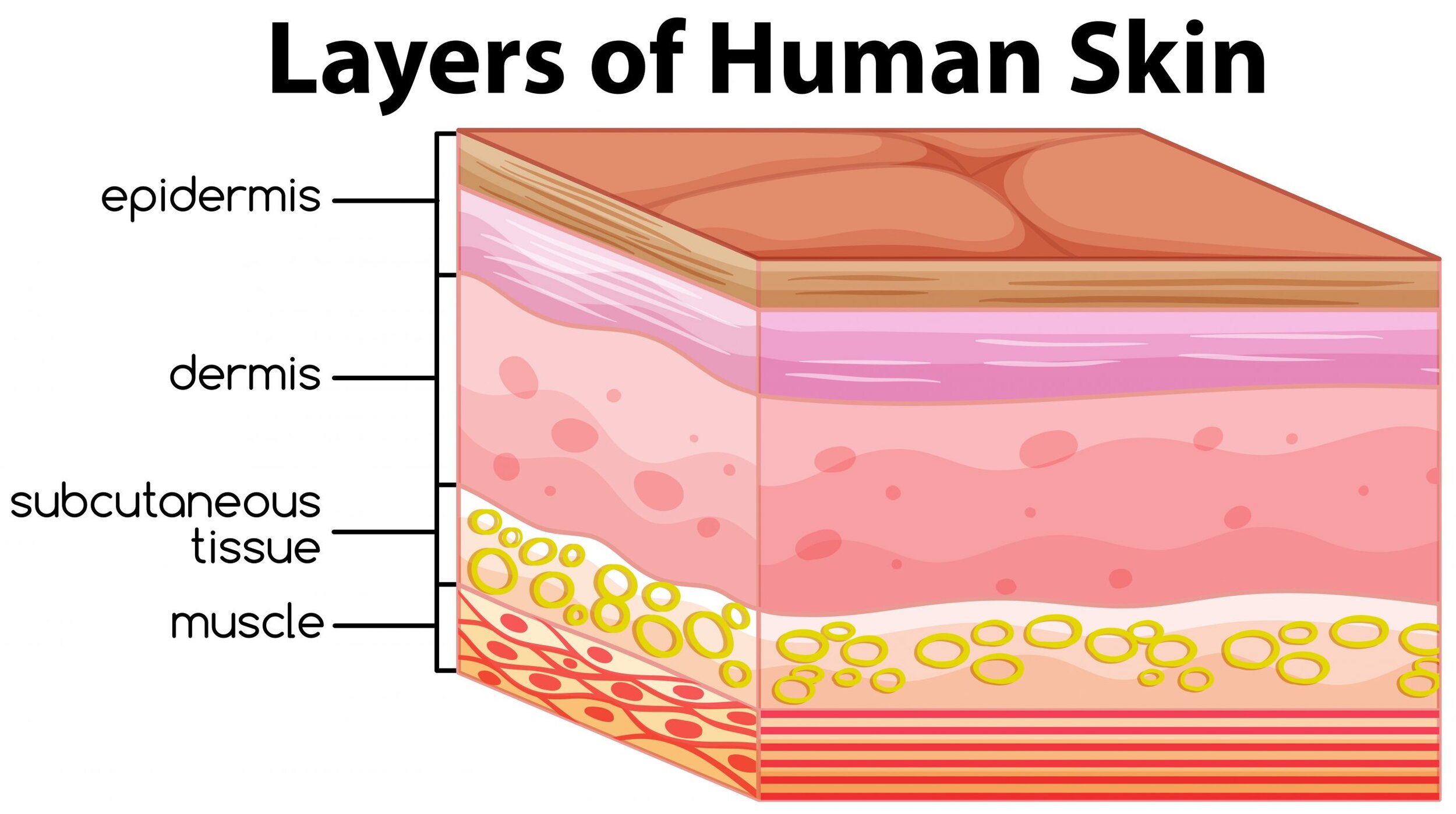Intramuscular Injections: Vaccines
With the recent vaccination roll-outs for COVID-19, more and more healthcare providers have been called upon to give immunizations. Traditionally, nurses play a major roll in giving medications and administering shots. But, it is crucial that all healthcare members are properly trained to give intramuscular (IM) shots.
Many physicians, nurses, nurse practitioners and physician assistants have stepped up during the pandemic to treat patients in the emergency room. Now, many of them are involved in COVID vaccination clinics to help stop the spread. This month, we are going to outline the proper technique showing you how to administer an IM shot in light of the COVID pandemic.
Although there are different vaccines on the market, the actual technique used to administer them is all the same. The vaccine must be given intramuscularly and there are a few special considerations to take into account.
The Moderna vaccine. This vaccine does not need to be reconstituted. It is kept at cold temperatures and must be thawed before drawing up doses. If it is drawn up too early or too cold, the medication can expand and falsify the dose. Be sure to properly thaw the vaccine before administration.
Photo courtesy of Pinterest
You have questions, we have answers.
1. Where does the vaccine go? The deltoid muscle of the arm. This is the best place to give the vaccine
2. How to find the right spot? To locate the right site, feel for the bone (acromion process) located at the top of the upper arm. The correct area to give the injection is two to three finger widths below the acromion process. At the bottom of the two-three fingers, will be an upside-down triangle. Give the injection in the center of the triangle.
3. Do I massage the medication? No absolutely not. Let the medication stay where it is and do not massage it as that may push it into the subcutaneous tissues.
4. Should I use the z-track method to give it? Yes. This is a great method and allows the skin to close back over the injection site securing the medication deep in the muscle. The best way to achieve the Z track method for vaccinations is to stretch the skin, not pinch it. You can see our video below to show you how to do this precisely.
5. Do I need a bandaid? For most patients, no Bandaid is needed. If they really want one, you certainly can give it to them, but there if the proper Z-track method is used, then bleeding will be minimal to none. Even patients on blood thinners or aspirin may not bleed. But, it is important to ask them as they might be more prone to form hematomas or bleed post vaccination.
6. What about a heating pad later? Sure, that’s no big deal, but it should not be scorching hot or involve massage.
7. Can I give the second shot in the same arm the first shot was given? Absolutely. No big deal, unless the patient has a preference to use the other arm.
8. One of our fans asked us “what if the patient has no arms?” The answer to this is that you can use the vastus lateralis muscle of the thigh. Let’s hope these patients are few and far between.
9. What about the needle? Make sure you are using the correct needle for injections. For men and women who weigh <130 lbs (<60 kg), a 22-25g, ⅝-inch needle is sufficient to ensure intramuscular injection in the deltoid muscle if the injection is made at a 90-degree angle and the tissue is not bunched. For men and women who weigh 130-152 lbs (60-70 kg), a 1-inch needle is sufficient.
10. What about multi-dosing draw ups? Drawing up vaccines in advance is debatable and many of them have multi-dose vials. Many of them have a shelf life outside of the fridge. Be familiar with each manufacturers recommendations. Typically, the vaccine is good for 1 hour in the syringe after drawing it up. We suggest if you are running a clinic, draw up 3-5 shots at a time and have them ready to go.
Take the patient’s temperature before giving the vaccine. If >100.3, or if the patient is sick, do not give the vaccine.
Time to Proceed
Prepare syringe with medication – Video 1
Pop the top off the vial. If the vial is a multi-dose vial, take a note about when the vial was first opened and label it with the manufacturers labels (they usually come in the same package). The rubber stopper should be cleaned with an alcohol swab.
Check out our video to account for air issues and how to draw up the medication. If you need to reconstitute the medication, you will need to release the pressure from the extra air added to the vial.
For each multi dose, insert air equal to the dose you want to draw up into the vial. Remove the cap from the needle and push the needle through the rubber stopper at the top of the vial. Inject all of the air into the vial. Be careful to not touch the needle to keep it clean. Use alcohol preps between each multi dose draw.
Photos courtesy of Pinterest
Give the Shot - Video 2
- Wash your hands. The CDC suggests 20 seconds of hand washing between patients. But, if you are choosing to use gloves and hand sanitizer, this is an acceptable practice for fast moving clinics.
- Locate the site by locating the acromion process and measure two-three fingers below it over the deltoid muscle of the arm.
- Clean the site with alcohol prep pad and give it a few seconds to dry.
- It is best practice to SIT next to your patient (who is also sitting) while you give them a shot in the arm.
- Have the patient shake out their arm if they seem tense and try not to engage the muscle while you inject the vaccination.
- Stretch out the skin taught, so you can administer the medication in a z-track method.
- Insert the needle at the 90-degree angle. This should be quick, but not like throwing a dart. That scares the patient and could cause them to vagal and syncopize.
- Slowly inject the medication. Each 0.1 mL of fluid should be 1 second of administration. So, a 0.5 mL shot will be 5 seconds.
- Withdraw the needle at the exact same angle as administration quickly and dispose of the needle appropriately. Don’t recap the needle and use a red sharps bin to dispose of the used needle.
Watch our partner and friend Michael Sharma get his vaccine!





